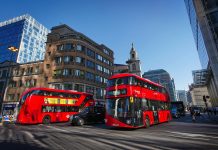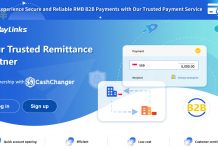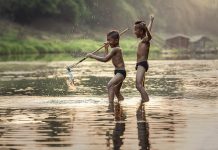Travel China – Top Attractions, Visitor Tips – Given the ongoing developments in the COVID-19 situation and the China official policy, all travellers should refer to the PRC Embassy website for the latest announcements on travel requirements, restrictions, advisories issued by the Chinese authorities at http://www.chinaembassy.org.
- Great Wall of China 万里长城 (“ten thousand li wall”)
Package: Great Wall of China, Longqingxia Ravine, & Longdi Jade Factory Private Tour
Promotion: SGD$ 123.79SGD$ 140.15(Book here)
UNESCO World Heritage Site – there is a Chinese saying that translates to – until you reach the Great Wall, you’re not a proper person; fig. to get over difficulties before reaching the goal. 不到长城非好汉 . Over 5,000km of series of fortifications that were built across the historical northern borders of ancient Chinese states and Imperial China as protection against various nomadic groups from the Eurasian Steppe.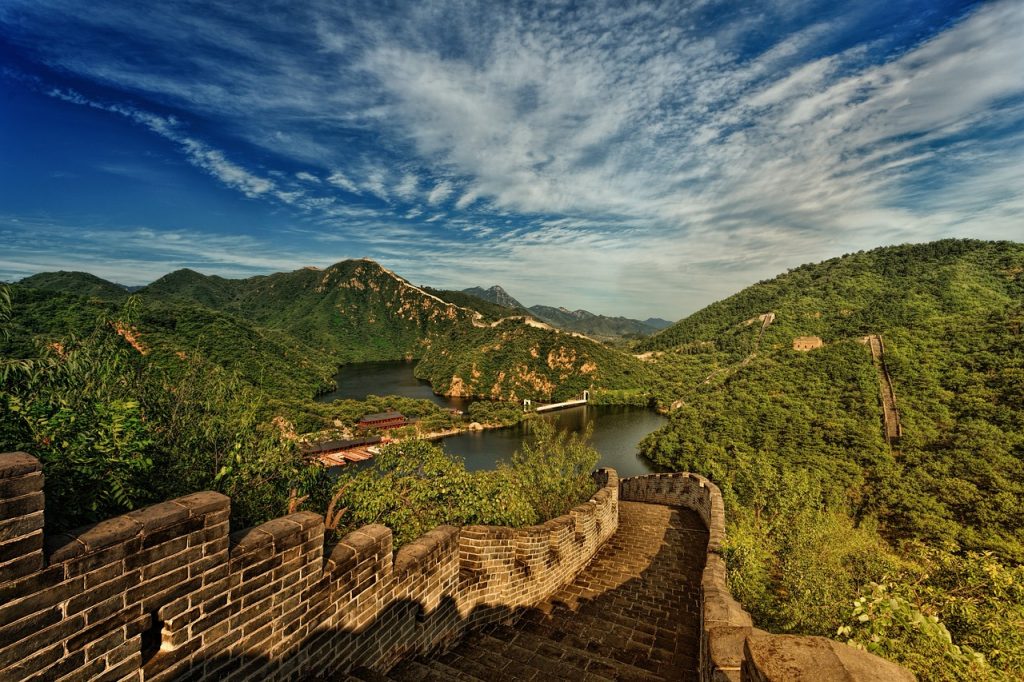
Great Wall of China - Several walls were built as early as the 7th century BC, with selective stretches later joined by Qin Shi Huang (220–206 BC), the first emperor of China.
- Little of the Qin wall remains. Later on, many successive dynasties built and maintained multiple stretches of border walls. The best-known sections of the wall were built by the Ming dynasty (1368–1644).
- Apart from defense, other purposes of the Great Wall have included border controls, allowing the imposition of duties on goods transported along the Silk Road, regulation or encouragement of trade, and the control of immigration and emigration.
- Several places to climb and have views of the Great Wall – Ba Da Ling, Jin Shan Ling, Mu Tian Ya, and so on
- Xi’an’s Terracotta Army
Package: Terracotta Warriors & Mausoleum Private Day Tour
Promotion: SGD$ 123.39SGD$ 155.95(Book here)
A collection of terracotta sculptures depicting the armies of Qin Shi Huang, the first emperor of China. It is a form of funerary art buried with the emperor in 210–209 BCE with the purpose of protecting the emperor in his afterlife.
Terracotta Army - The figures, dating from approximately the late third century BCE, were discovered in 1974 by local farmers in Lintong County, outside Xi’an, Shaanxi, China. The figures vary in height according to their roles, the tallest being the generals.
- The figures include warriors, chariots and horses. Estimates from 2007 were that the three pits containing the Terracotta Army held more than 8,000 soldiers, 130 chariots with 520 horses, and 150 cavalry horses, the majority of which remained buried in the pits near Qin Shi Huang’s mausoleum.
- Other terracotta non-military figures were found in other pits, including officials, acrobats, strongmen, and musicians.
- Beijing’s Forbidden City 紫禁城
Package: Beijing Palace Museum Ticket (The Forbidden City)
Promotion: SGD$ 22.45SGD$ 25.15(Book here)
A World Heritage Site since 1987 – is a palace complex in Dongcheng District, Beijing, China, at the center of the Imperial City of Beijing. It is surrounded by numerous opulent imperial gardens and temples including the 22 ha (54-acre) Zhongshan Park, the sacrificial Imperial Ancestral Temple, the 69 ha (171-acre) Beihai Park, and the 23 ha (57-acre) Jingshan Park. It is officially administered by the Palace Museum.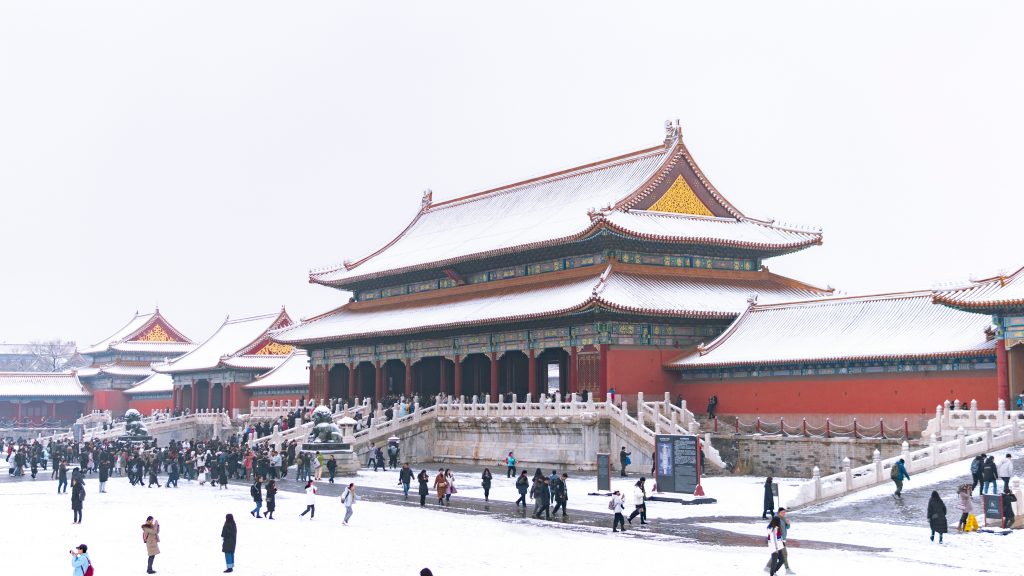
Beijing’s Forbidden City - The Forbidden City was constructed from 1406 to 1420, and was the former Chinese imperial palace and winter residence of the Emperor of China from the Ming dynasty (since the Yongle Emperor) to the end of the Qing dynasty, between 1420 and 1924.
- The Forbidden City served as the home of Chinese emperors and their households and was the ceremonial and political center of the Chinese government for over 500 years. Since 1925, the Forbidden City has been under the charge of the Palace Museum, whose extensive collection of artwork and artifacts were built upon the imperial collections of the Ming and Qing dynasties.
- Huangshan 黄山 or Yellow Mountains
UNESCO World Heritage Site – is a mountain range in southern Anhui Province and one of China’s major tourist destinations.- In eastern China, it was originally called “Yishan”, and was renamed because of a legend that Emperor Xuanyuan once made alchemy here. Vegetation on the range is thickest below 1,100 meters (3,600 ft), with trees growing up to the treeline at 1,800 meters (5,900 ft).

huangshan mountains - The area is well known for its scenery, sunsets, peculiarly-shaped granite peaks, Huangshan pine trees, hot springs, winter snow and views of the clouds from above. Huangshan is a frequent subject of traditional Chinese paintings and literature, as well as modern photography.
- In eastern China, it was originally called “Yishan”, and was renamed because of a legend that Emperor Xuanyuan once made alchemy here. Vegetation on the range is thickest below 1,100 meters (3,600 ft), with trees growing up to the treeline at 1,800 meters (5,900 ft).
- Li River or Li Jiang 漓江
Package: Li River Cruise and Yangshuo Private Day Tour
Promotion: SGD$ 147.35SGD$ 164.69(Book here) The upper reaches of the Gui River in northwestern Guangxi, China. It is part of the Xijiang River system in the Pearl River Basin. The river flows 164 kilometers (102 mi) from Xing’an County to Pingle County, where the karst mountains and river sights highlight the famous Li River cruise.
Li Jiang - The Li River originates in the Mao’er Mountains in Xing’an County and flows in the general southern direction through Guilin, Yangshuo, and Pingle. In Pingle the Li River merges with the Lipu River and the Gongcheng River and continues south as the Gui River, which falls into the Xi Jiang, the western tributary of the Pearl River, in Wuzhou.
- Tourist rafting boats cruise from Yangshuo County, on the Li River. The upper course of the Li River is connected by the ancient Lingqu Canal with the Xiang River, which flows north into the Yangtze; this in the past made the Li and Gui Rivers part of a highly important waterway connecting the Yangtze Valley with the Pearl River Delta.
- The 439-kilometer (273 mi) course of the Li and Gui Rivers is flanked by green hills. Cormorant fishing is often associated with the Lijiang. Li River cruises from Guilin to Yangshuo are famous, attracting millions of visitors a year.
- Zhangye Danxia landscape 张掖国家地质公园
Located in Sunan and Linze counties within the prefecture-level city of Zhangye, in Gansu, China. It covers an area of 322 square kilometers (124 sq mi). The site became a quasi-national geopark on April 23, 2012 (provisional name: Zhangye Danxia Geopark).
Zhangye Danxia - It was formally designated as “Zhangye National Geopark” by the Ministry of Land and Resources on June 16, 2016, after it passed the on-site acceptance test.
- Zhangye Danxia is known for the unusual colors of the rocks, which are smooth, sharp, and several hundred meters tall. They are the result of deposits of sandstone and other minerals that occurred over 24 million years. The result (similar to a layer cake), was tilted by the action of the same tectonic plates responsible for creating parts of the Himalayan mountains. Wind, rain, and time then sculpted extraordinary shapes, including towers, pillars, and ravines, with varying colors, patterns, and sizes.
- Known for its colorful rock formations, it has been voted by Chinese media outlets as one of the most beautiful landforms in China. It is not a UNESCO world heritage site.
- West Lake 西湖
Package: Heavenly Hangzhou Private Day Tour
Promotion: SGD$ 76.40 SGD$ 81.85 (Book here)UNESCO World Heritage Site since 2011 – is a freshwater lake in Hangzhou, China. It is divided into five sections with three causeways. There are numerous temples, pagodas, gardens, and natural/artificial islands within the lake. Gushan (孤山) is the largest natural island and three artificial islands: Xiaoyingzhou (小瀛洲), Huixin Pavilion (湖心亭), and Ruan Gongdun (阮公墩) stand at the middle of the lake.
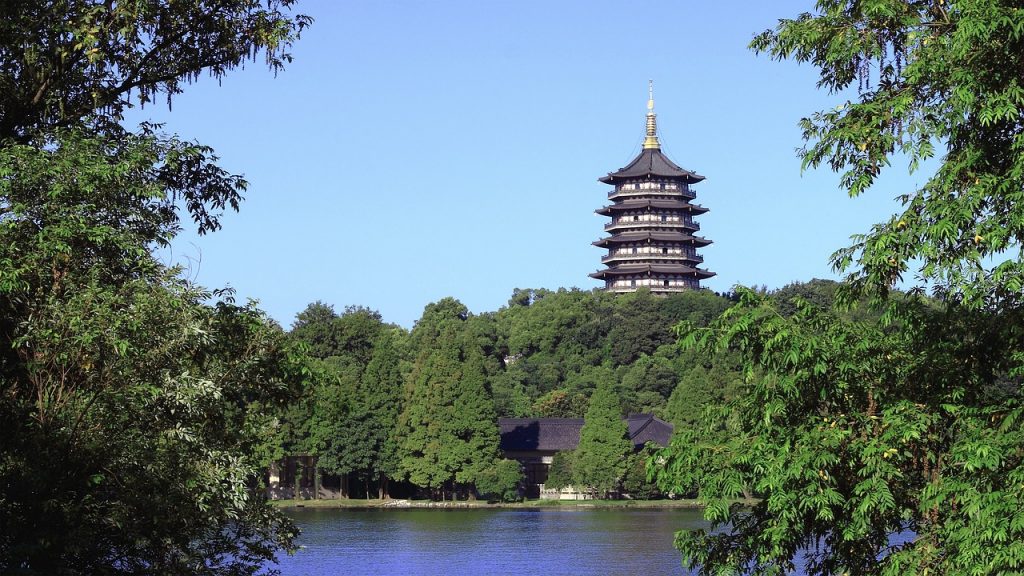
West Lake - Leifeng Pagoda (雷峰塔) and Baochu Pagoda (保俶塔) are separated by the lake. Mirroring each other, the basic pattern of “one mountain, two towers, three islands, three banks, and five lakes” is formed.
- West Lake is located at No. 1 Longjing Road, Xihu District, Hangzhou City, Zhejiang Province, in the west of Hangzhou City. The total area of the scenic spot is 49 square kilometers, the catchment area is 21.22 square kilometers, and the lake area is 6.38 square kilometers.
- West Lake has influenced poets and painters throughout Chinese history for its natural beauty and historic relics, and it has also been among the most important sources of inspiration for Chinese garden designers.
- Lhasa Potala Palace
A dzong fortress in Lhasa, Tibet. It was the winter palace of the Dalai Lamas from 1649 to 1959, has been a museum since then, and a World Heritage Site since 1994. The palace is named after Mount Potalaka, the mythical abode of the bodhisattva Avalokiteśvara.
Lhasa Potala Palace - The 5th Dalai Lama started its construction in 1645 after one of his spiritual advisers, Konchog Chophel (died 1646), pointed out that the site was ideal as a seat of government, situated as it is between Drepung and Sera monasteries and the old city of Lhasa. It may overlay the remains of an earlier fortress called the White or Red Palace on the site, built by Songtsen Gampo in 637.
- The building measures 400 metres (1,300 ft) east-west and 350 metres (1,150 ft) north-south, with sloping stone walls averaging 3 metres (9.8 ft) thick, and 5 metres (16 ft) thick at the base, and with copper poured into the foundations to help proof it against earthquakes. Thirteen storeys of buildings, containing over 1,000 rooms, 10,000 shrines and about 200,000 statues, soar 117 metres (384 ft) on top of Marpo Ri, the “Red Hill”, rising more than 300 metres (980 ft) in total above the valley floor.
- Zhangjiajie’s Precipitous Pillars 湖南张家界国家森林公园
Package: Baofeng Lake with Boat Ride
Promotion: SGD$ 20.65SGD$ 23.59(Book here)UNESCO World Heritage site since 1992 – is a national forest park located in Zhangjiajie, Hunan Province, China. It is one of several national parks within the Wulingyuan Scenic Area.
- Recognized as China’s first national forest park with an area of 4,810 ha (11,900 acres), Zhangjiajie National Forest Park is part of a much larger 397.5 km2 (153.5 sq mi) Wulingyuan Scenic Area.

Zhangjiajie’s Precipitous Pillars - The most notable geographic features of the park are the pillar-like formations that are seen throughout the park. Although resembling karst terrain, this area is not underlain by limestones and is not the product of chemical dissolution, which is characteristic of limestone karst.
- They are the result of many years of physical, rather than chemical, erosion. Much of the weathering that forms these pillars is the result of expanding ice in the winter and the plants that grow on them. The weather is moist year-round, and as a result, the foliage is very dense. The weathered material is carried away primarily by streams. These formations are a distinct hallmark of the Chinese landscape and can be found in many ancient Chinese paintings.
- Recognized as China’s first national forest park with an area of 4,810 ha (11,900 acres), Zhangjiajie National Forest Park is part of a much larger 397.5 km2 (153.5 sq mi) Wulingyuan Scenic Area.
- Leshan Giant Buddha 樂山大佛
Package: Chengdu to Leshan Giant Buddha Private Day Tour
Promotion: SGD$ 69.39SGD$ 86.75(Book here)UNESCO World Heritage Site since 1996 -is a 71-meter (233 ft) tall stone statue, built between 713 and 803 (during the Tang dynasty).
- It is carved out of a cliff face of Cretaceous red bed sandstones that lies at the confluence of the Min River and Dadu River in the southern part of Sichuan province in China, near the city of Leshan.

Leshan Giant Buddha - The stone sculpture faces Mount Emei, with the rivers flowing below its feet. It is the largest and tallest stone Buddha statue in the world and it is by far the tallest pre-modern statue in the world. It is over 4 km from the Wuyou Temple.
- The Mount Emei Scenic Area, including Leshan Giant Buddha Scenic Area, has been listed as a UNESCO World Heritage Site since 1996.
- It is carved out of a cliff face of Cretaceous red bed sandstones that lies at the confluence of the Min River and Dadu River in the southern part of Sichuan province in China, near the city of Leshan.
- The Yangtze River and the Three Gorges 三峡
Three adjacent gorges along the middle reach of the Yangtze River, in the hinterland of the People’s Republic of China. With a subtropical monsoon climate, they are known for their scenery.
Three Gorges - The “Three Gorges Scenic Area” is classified as a AAAAA scenic area (the highest level) by the China National Tourism Administration.
- The Three Gorges—comprising the Qutang, Wu, and Xiling gorges—span 193 miles (311 km), beginning at Baidi City of Chongqing, in the west and ending at Nanjing Pass, at Yichang City, Hubei Province, in the east, between which are the Fengjie and Wu Mountains of Chongqing, as well as Badong, Zigui, and Yichang of Hubei Province.
- the Three Gorges region is historically and culturally important in China. Many settlements and archaeological sites were submerged by the upstream reservoir of the Three Gorges Dam.
Explore more activities and promotion packages at
Klook.com
As usual, are you a money changer? Join us by leaving your contact here directly and stand to gain our whole suit of software and hardware for free to help digitize your business.
Missed our recent news? Catch up on news like Travel China – Top Attractions, Visitor Tips here https://stories.cashchanger.co
Compare & get latest best China Exchange rates #SGDCNY #CNYSGD #CNY #RMB #Renminbi #SingCN #SingChina https://cashchanger.co/singapore/sgd-to-cny
Compare Remittance best rates to send money from Singapore to China 中国 – https://remit.cashchanger.co/singapore/sgd-to-cny
Catch us on:
Web: https://cashchanger.co | https://remit.cashchanger.co/
Telegram: https://cashchanger.co/telegram
Facebook: https://fb.me/cashchanger
Instagram: https://www.instagram.com/cashchangercom/
#exchangerate #remittance #compareexchangerates #compareremittancerates #fxrates
With thanks and referenced from wikipedia.org




